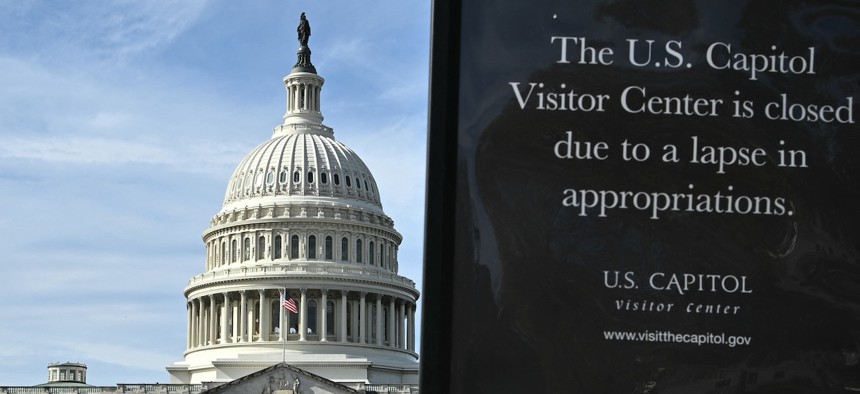
A bipartisan group of lawmakers said on Tuesday they have made slight progress toward ending the government shutdown, which is poised to become the longest in U.S. history after another failed vote will drag it into its 36th day.
Senators are getting closer to an agreement on a package of full-year appropriations bills for certain agencies and an accompanying stopgap bill to reopen the rest of government until a to-be-determined date. Lawmakers in both parties suggested many details still needed to be ironed out and there was not yet any broad agreement, but suggested the two sides were having ongoing conversations that have proven productive.
Sen. Gary Peters, D-Mich., declined to discuss the nature of the negotiations, saying only that they are in a pivotal moment.
“I don’t want to characterize conversations,” Peters said. “We’re in a sensitive time right now. It’s important to say we’re still talking and hopefully progress will be made.”
In a note of barely perceptible optimism, Sen. Mark Kelly, D-Ariz., said the Senate has inched closer to a resolution.
“Maybe we’re moving.” Kelly said. “We’re closer to the end of this than we are to the beginning.”
Sen. Susan Collins, R-Maine, said progress has been made in those conversations.
“The talks are more productive,” Collins said. “It’s still a challenge, and there are issues to be solved.”
The senators are considering three full-year appropriations bills—to fund the Veterans Affairs Department, the Agriculture Department and the legislative branch—marking one-fourth of the twelve spending bills Congress must pass each year. The Senate approved a package earlier this year, but negotiators are working on a version that could clear the House and, potentially, be attached to a continuing resolution to temporarily fund the rest of government.
Republican senators noted that issues on the three-bill “minibus” have mostly been ironed out, though details remained under wraps. The Senate and House have passed vastly different fiscal 2026 appropriations bills, with the latter measures introducing significant cuts that the upper chamber largely avoided in its bipartisan legislative proposals.
Senate Democrats held a lengthy, two-plus hour meeting Tuesday afternoon, though they did not announce any strategy once it concluded.
“We had a very good caucus, and we’re exploring all the options,” Senate Minority Leader Chuck Schumer, D-N.Y., told reporters after the lunch.Peters said after the meeting that conversations on how to end the shutdown were “still a work in progress,” adding the meeting was so long because “there was a lot to discuss.”
While the Senate rejected the House-backed continuing resolution that would fund agencies through Nov. 21 for the 14th time on Tuesday, it appears the legislation is no longer operative. Senate Majority Leader John Thune, D-S.D., said a new CR—for agencies not otherwise funded by full-year spending bills, should such a deal come together—with a later expiration has become necessary.
“The Nov. 21 deadline no longer makes a lot of sense, so clearly it would need to be extended,” Thune said. He added the new deadline was still being discussed but the goal was to avoid another year-long CR.
The post ‘We’re closer to the end’: Lawmakers signal some progress in bipartisan talks to end shutdown appeared first on Defense One.




